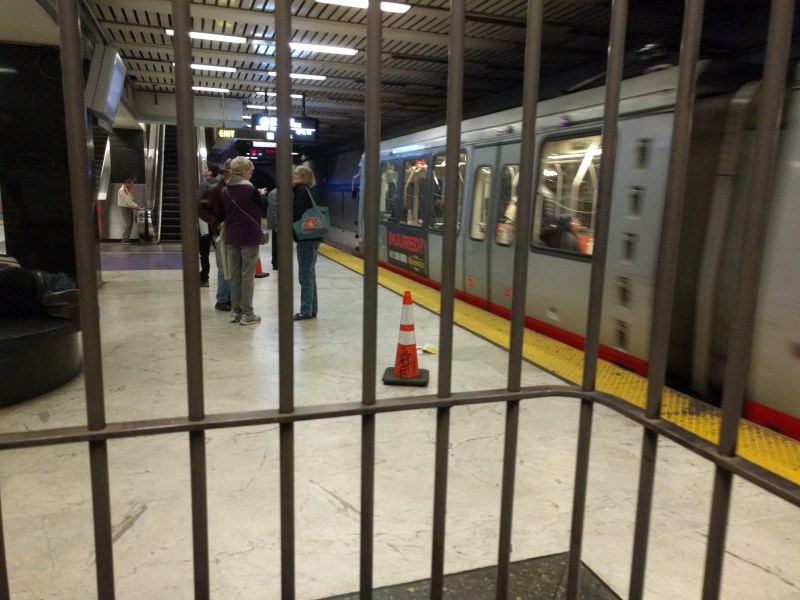Note: GJEL Accident Attorneys regularly sponsors coverage on Streetsblog San Francisco and Streetsblog California. Unless noted in the story, GJEL Accident Attorneys is not consulted for the content or editorial direction of the sponsored content.
Riders are beginning to see real progress on many of the long-discussed initiatives to integrate the region's transit systems, from fare integration to wayfinding to transit priority and more. It’s important to recognize how far we’ve come - seamless transit is finally taking shape in the Bay Area thanks to riders speaking up, elected officials championing integration, and greater than ever attention from Transit General Managers (Transit GMs) and the Metropolitan Transportation Commission (MTC). We summarize the impact and timeline of some important collaborative efforts in this post.
The Regional Network Management (RNM) Committee and Council launched in late 2023
With the creation of these two related bodies, riders finally have dedicated forums where transit integration and coordination is the primary focus, and where progress on integration is going to be regularly communicated and discussed. The RNM Committee is made up primarily of MTC commissioners and transit agency board members and sets policy direction for the RNM Council, made up of 10 Transit GMs and one MTC executive, and which focuses on program implementation. The two bodies encapsulate the growing sentiment that regional collaboration is not just a “nice to have” – instead, it is the key to successful transit. The RNM work is rooted in the 2021 Transit Transformation Action Plan, a set of 27 near-term actions to make public transit more rider-focused, affordable, and accessible. Importantly, the 2-year update recognized strengthening network management as a key to delivering faster and more decisive outcomes.

Many of the policy reforms discussed below are top priorities for the RNM Council.
Expansion of Highly Successful BayPass Pilot Program
Phase 1 of BayPass launched in August 2022, providing unlimited transit use for some 50,000 randomly selected students at four universities. The success of the program – showing a 40% increase in transit use, a 74% increase in inter-operator transfers among recipients, and over 2 million total trips – warrants continued support as the region looks for strategies to increase ridership. Additionally, over 90% of students at participating universities support making BayPass available for all students.
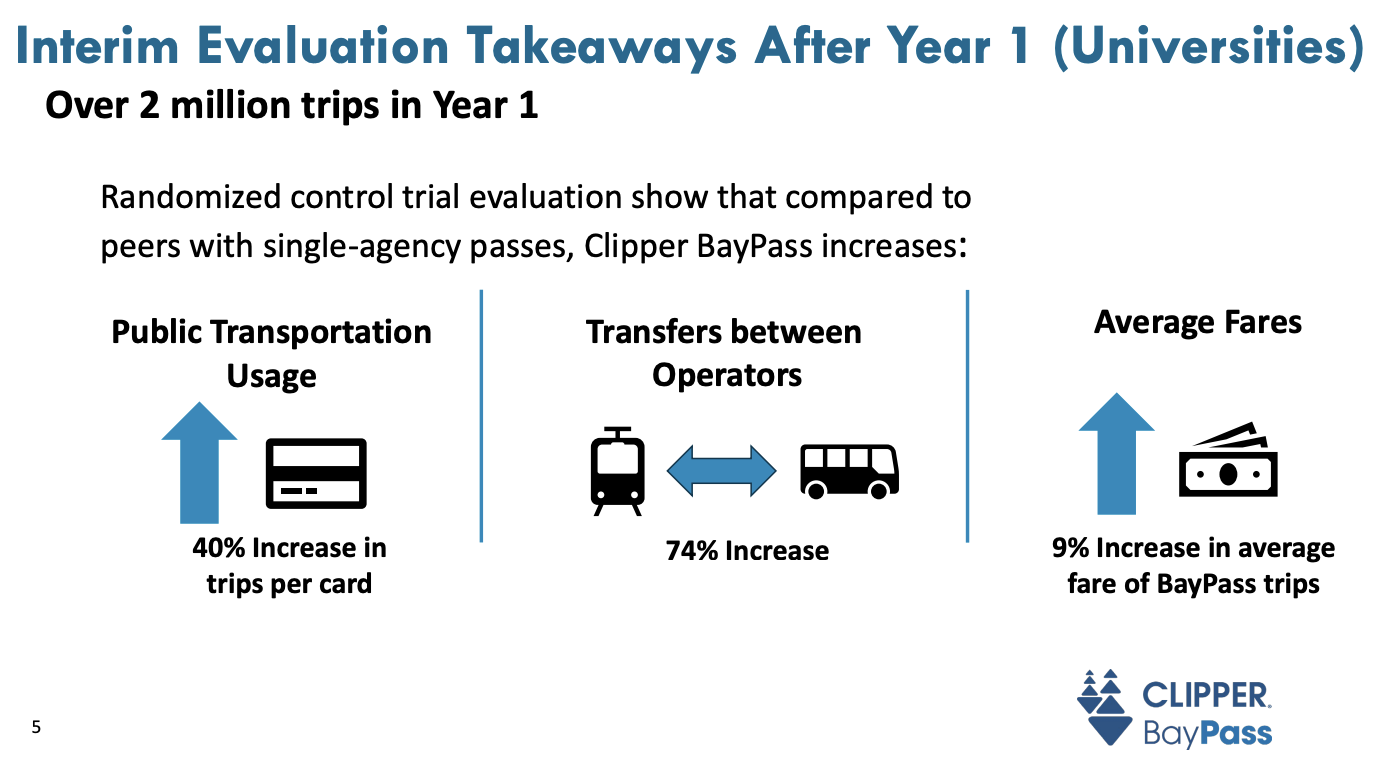
The BayPass project team - co-led by staff at BART and MTC - is currently working with existing partners on ways to extend the program past the original June 2024 sunset date and expand the program to other interested academic institutions.
Phase 2 of BayPass, launched in January 2024, offers unlimited regional passes to major employers. So far, nearly 8,000 employees of UCSF, City of Menlo Park, and the Alameda Transportation Management Association have access to the program. The project team is working to make the program available to at least 20,000 employees at 10 participating employers within the coming months.
As a randomized controlled experiment, BayPass is perhaps the best evidence we have that reducing barriers to transit access will grow ridership. We applaud Transit Agencies for their continued support to expand this program.
Free and reduced transfers
After much discussion, the region’s free and reduced transfer policy is finally set to launch in late 2024, coinciding with the deployment of Clipper 2.0. Riders will receive a discount of up to $2.50 on all transfers made within two hours after their first boarding during this 18-24 month long pilot program. Riders with single-agency passes will also receive the discount when transferring.
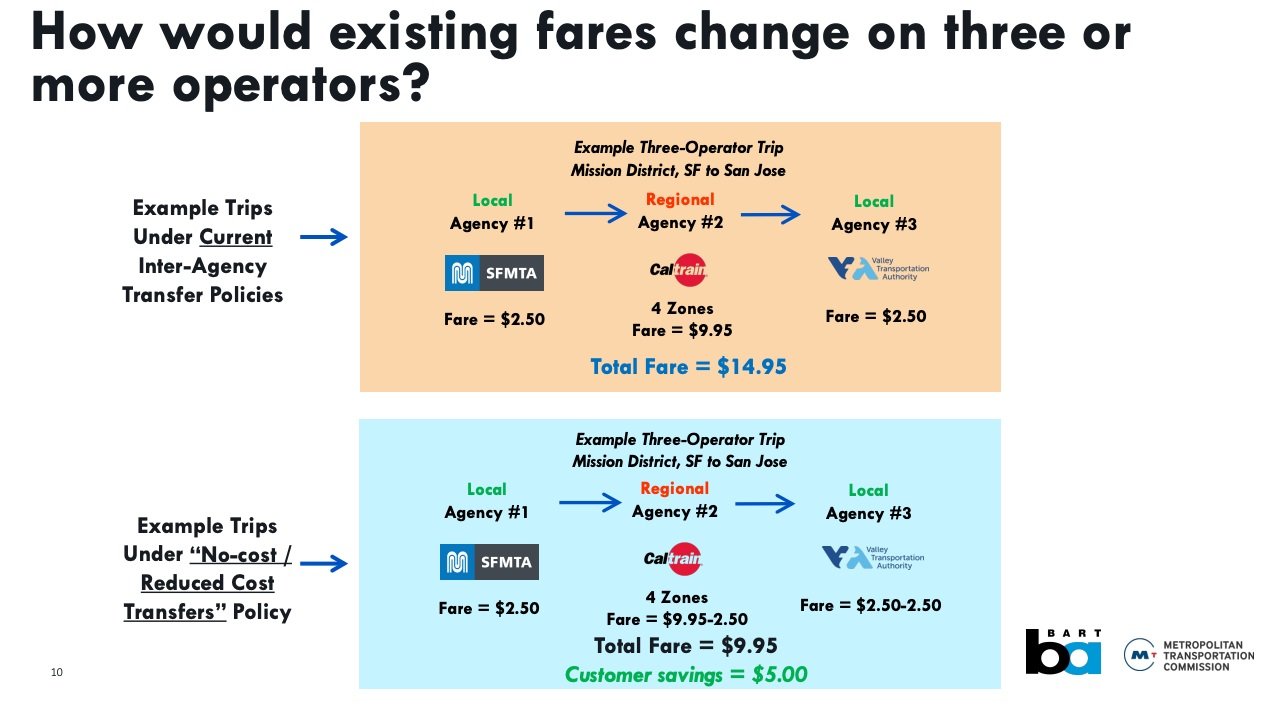
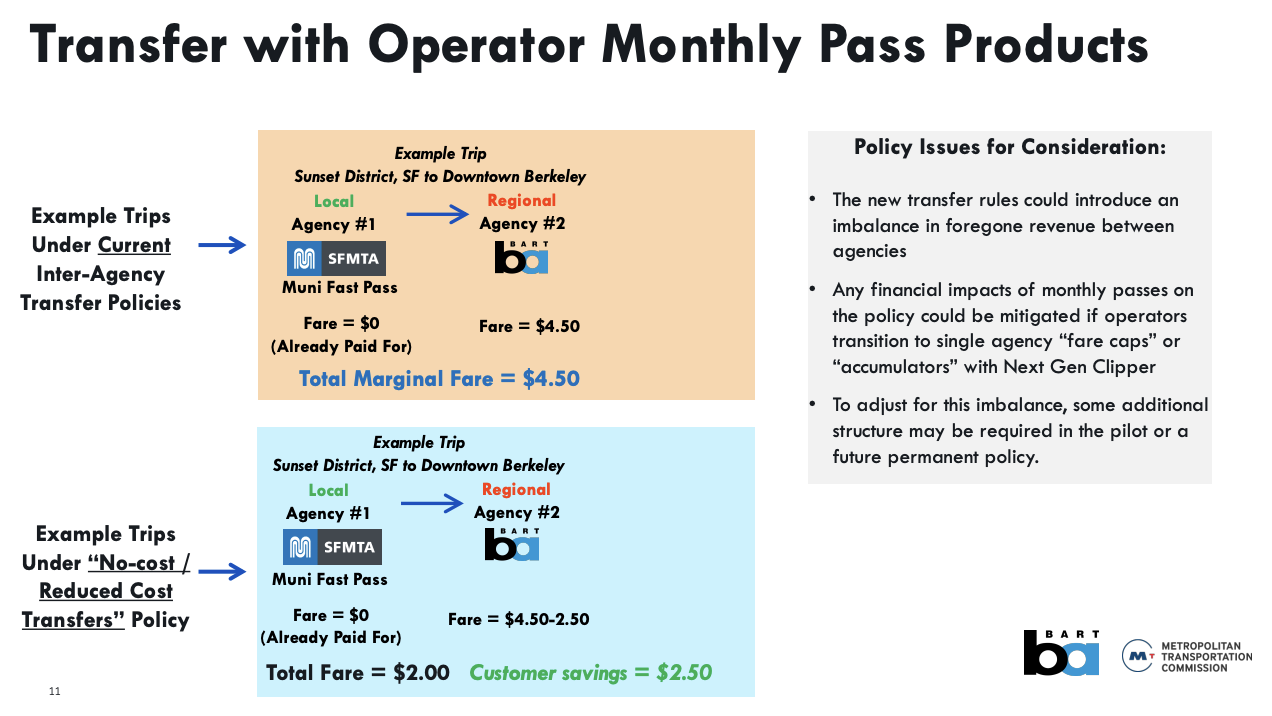
This collaborative effort between agencies is a step in the right direction towards attracting riders and expanding affordable access to housing and jobs. Importantly, this policy is conservatively estimated to increase transit ridership by about 2% - which given current ridership levels would translate to roughly 18,000 new daily riders.
It has been heartening to see Transit GMs’ commitment to implementing free and reduced priced transfers. This Spring/Summer each transit agency board will need to vote to approve the new program - rider voices will, as usual, be needed to ensure boards support the program, and we’ll inform you when it's time to speak - use this form to let us know which agencies you use.
Wayfinding
Again, after many years of discussion, riders are finally getting a first look at unified transit signage that transit agencies and MTC have been collaborating on. Prototype designs are set to roll out at the El Cerrito del Norte station and Santa Rosa Transit Mall hubs before the end of spring 2024. After collecting feedback from these initial designs, the next rollout of pilot projects and development of regional standards are expected to take place between 2025 and 2026.

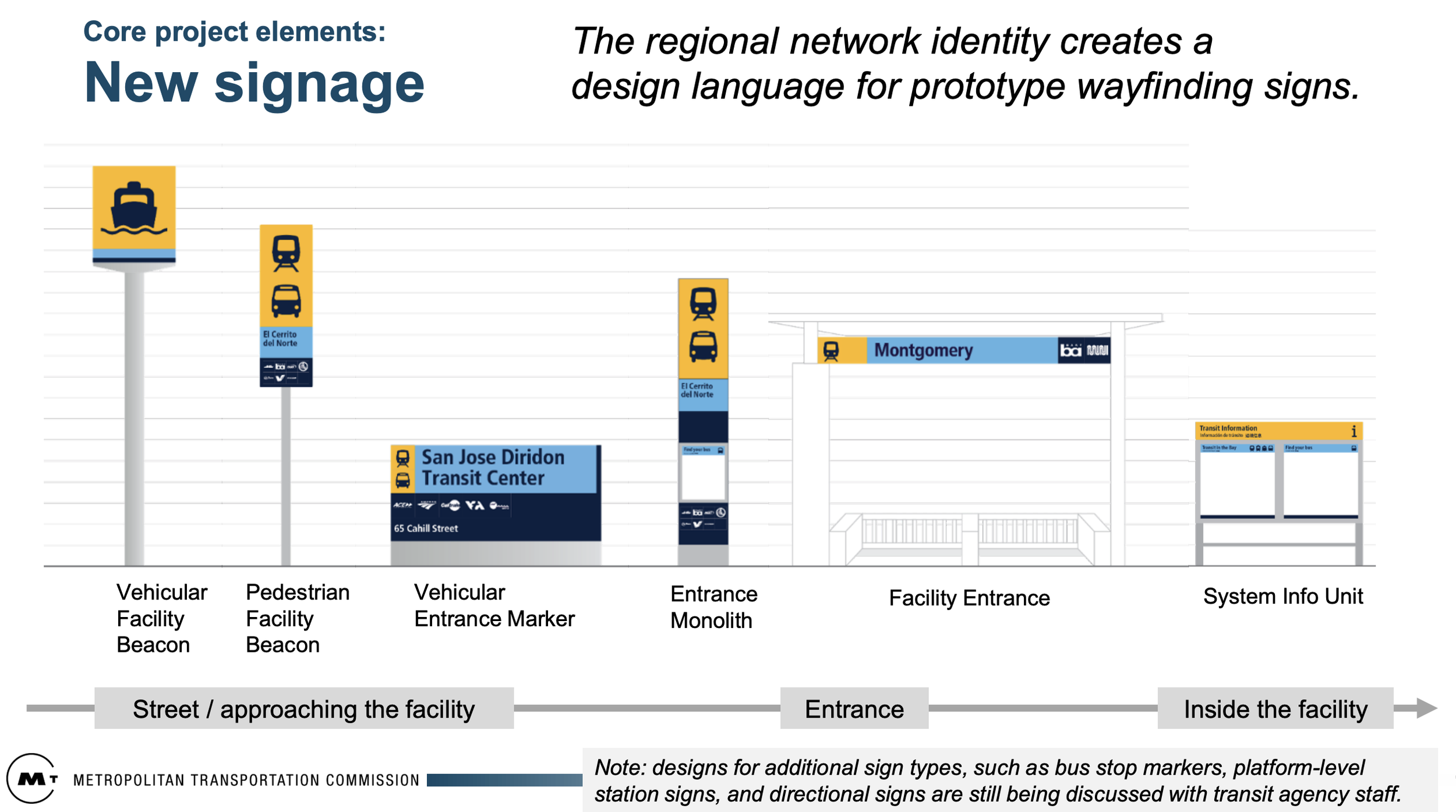
Standardized and clear transit signage is vital for improving ease-of-use with dependable, familiar information at all key transit hubs. This will help riders navigate transit stations, embark on multi-agency trips, and improve public perception of Bay Area transit as a single, unified system. This is especially helpful for first-time, infrequent, and out of town transit users not familiar with the Bay Area’s complex network of operators.
Transit GMs urged speedy implementation at the January 22nd Regional Network Management Council. They also implored staff to deploy pilot signage at locations with more agencies and transit routes (such as at the Powell Street BART station) to test these designs at more complex transit hubs.

Transit Priority work begins

After years of groundwork, in December, over a hundred Bay Area transit agencies and city staff came together in downtown Oakland to kick off developing a common regional policy vision for transit priority. Transit priority - or speeding up buses so they don’t get stuck in traffic - is one of the most cost-effective things we can do to increase transit ridership, and was identified as a top priority in the region’s Transformation Action Plan. However, getting started took some time due to the sheer number of agencies that needed to be brought together - not just the region’s 27 transit agencies, but also county transportation authorities, cities, and state agencies that control the roads that buses travel on. This is truly the issue that touches practically all of the 151 entities in our Definitive list of Bay Area transit agencies
Transit GMs from AC Transit, WestCAT, LAVTA, Marin Transit, TriDelta, and Samtrans enthusiastically participated in the discussions, speaking up in support of regional standards, the importance of a clear regional vision, and developing shared capacity. Much more work is ahead but the workshop was a powerful demonstration of how transit agencies are working together collaboratively to deliver better transit to the public, with leadership coming from the top.
Conclusion
Creating a rider-focused, coordinated transit system ultimately depends on transit leaders prioritizing these changes and leading by example. There is additional work ahead, but progress has been made. Transit GMs deserve credit for taking on these priorities and listening to the hundreds of riders that have called for greater integration. We will continue reporting on next steps for these various programs and provide advocacy opportunities to encourage transit agencies to keep pushing forward with seamless transit.
***
Ian Griffiths is the co-founder and policy director of Seamless Bay Area. This post first appeared on the Seamless site, republished with permission
